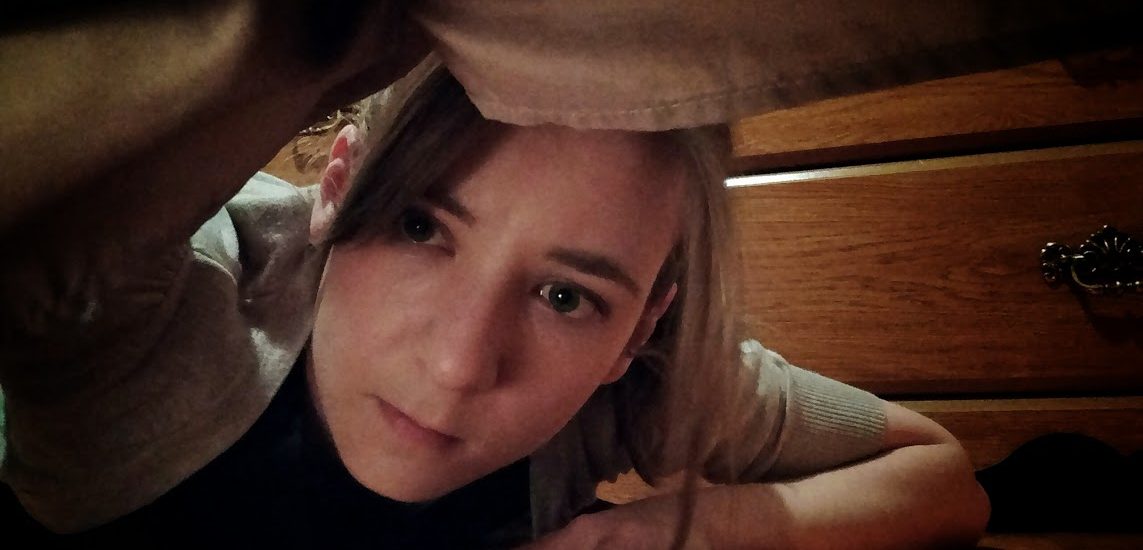We are attracted to true crime, but we are embodied by fears far more primordial
by Danielle Elliott
For three straight nights, I sat glued to my couch, unable to peel my eyes off the screen as I watched re-enacted after re-enactment of grisly murders that had taken place in the United States since the 1980s. Your Worst Nightmare retold stories that were just too cinematic to be true… but they were.
A teenaged couple on a romantic picnic are forced to flee through a forest. They are chased by two men on a bad trip with drug-addled minds. They hack-up the teenaged bodies and leave them in a swamp, only to be found months later.
A stalker kidnaps a university girl and when he realizes police are onto him, he forces her to walk off the edge of a cliff, blindfolded.
A teenage girl is tormented before being stabbed to death by her boyfriend’s friends in clown masks – a murder they’d been planning for months. The boys just wanted to know what it would be to kill someone.
With incredible ease, night after night I’d flick off the TV, lock the doors, turn out the lights and drift softly to sleep without giving these stories another thought. Me, the most easily terrified person on the planet.
A few weeks later, I watched a low-budget “Creepypasta” short film online. It had won an award. My next three nights were plagued with nightmares followed by sleep paralysis. No matter how strong the need, I would not – could not, get up to use the washroom in the middle of the night. No. I would simply have to wait until dawn broke.
This reaction is not logical. There is no rhyme or reason to it but still, it’s the truth. Is it possible that true-crime stories simply cannot embody our actual fears, no matter if they are true?
Things that go bump in the night
My favourite horror stories tend to be on the campy side. While true-crime is, well, true, it doesn’t have as much to say about the human condition as let’s say ghouls, werewolves or zombies. I know this may sound insane, but it’s true.
Ghouls date back past pre-Islamic Arabic culture. They represent an individual on the cusp of, but not inside, society. Watching, lurking and waiting. They are scavengers with evil intentions standing by for any opportunity to take advantage of a situation. They are our primitive selves in the harsh beginnings of the world, one of which we do not wish to be reminded. One where cannibalism is not just an option, it’s necessary. Nothing can go to waste.
The Wendigo of North American Native folklore reflects this fear of cannibalism in more modern times. A family trapped by Canada’s harsh winter and tormented by the cries of the Wendigo. Cries of starvation and madness make you begin to believe your child now resembles a delicious wild boar. Or maybe… maybe it’s just the wind pounding at your shelter.
Tales of Werewolves go back centuries in Europe. They represent the devolution from our good, societal selves into our raw animalistic nature in mere moments. Nothing will stand in their path of destruction and chaos. We all know the moon has a strong pull on our biology… but also those of predators. Not to mention, the thought of hungry wolves hunting me down is one of the most terrifying things I can think of, despite how bad The Grey was.
Probably the most modern and topical monsters, Zombies, were popularized in the 1960s. Their origins actually go back past the turn of the century in voodoo culture. What exactly is going on in top-secret government labs? What are we creating or mutating all in the name of science and progress? Will our innate curiosity breed our own destruction? What if we lose the ability to control ourselves, our needs and desires? What if you become the prey of everyone you love?
The monster inside
True-crime is based on “others.” There are obviously some disturbed people in the world but they’re out there. They’re not here. Some may rationally fear these stories, but not everyone.
Monsters, especially well-established ones, play into a collective consciousness of fears passed down through centuries of stories, narratives and even our own biology. They have evolved over time to reflect something primal within all of us. Something beyond our control.
That “Creepypasta” film, the one that still haunts me during lonely trips down to my shadowy basement, played on our instinctual fears of lightening. Fears of power outages during a storm. Fears of the unknown or unknowable. Fears of a ghoul appearing amongst all the mayhem and feeling helpless when modern technology has failed us.
While I continue to lock my doors at night and try not to walk alone through a dark parking lot, it is not truly the sociopath or the psychotic killer that worries me. No. It is the monster in the closet or under my bed, waiting to reach out and grab me in the middle of the night. It is the thing lurking in the shadows of my home. It is rooted deep and subconsciously inside every one of us. It is in the mirror. It is man. It is the monster inside us all.
